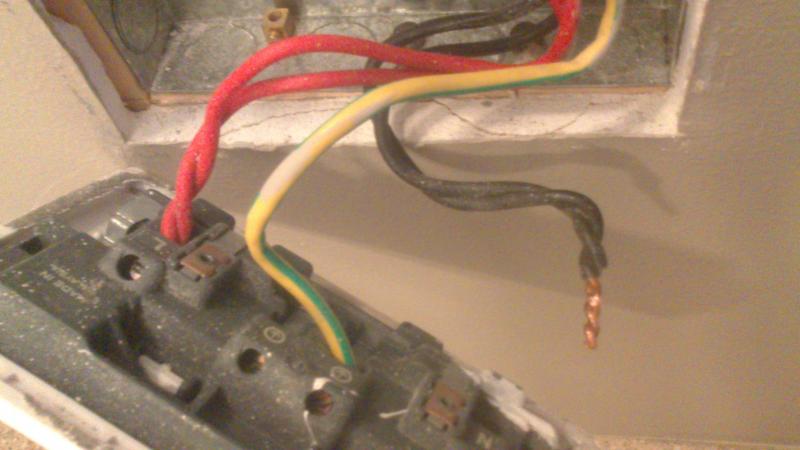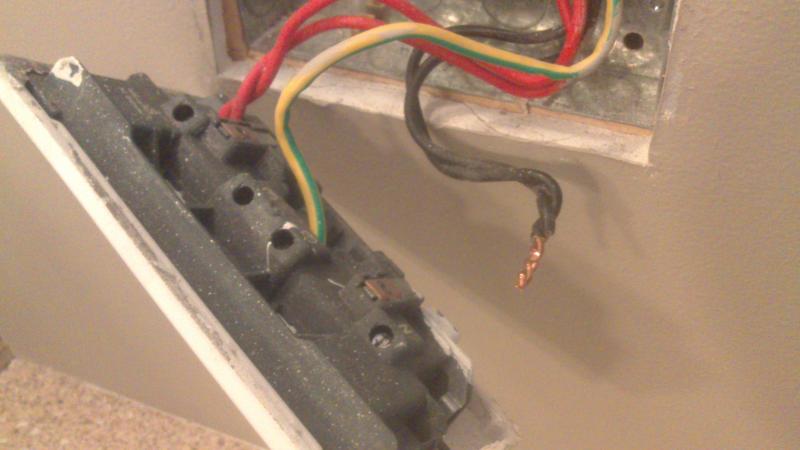I'm just wondering what people think, when I wire sockets, accessories e.t.c. I always twist conductors together with a pair of pliers before screwing into terminals, because I've seen many times cables that have come loose or aren't screwed in properly (especially when two conductors go into the same terminal.
I'm not a professional, have only ever done simple wiring in my own places, but it seems to me this is good practice, would anyone disagree, and why? I twist the earth cables together and use one sleeve also, just because its neater and doesn't waste so much sleeving
You are using an out of date browser. It may not display this or other websites correctly.
You should upgrade or use an alternative browser.
You should upgrade or use an alternative browser.
Twisting conductors or not?
- Thread starter tew1
- Start date
Sponsored Links
That you're having a laugh aren't you?I'm just wondering what people think,
?That you're having a laugh aren't you?I'm just wondering what people think,
never, ever, ever twist the conductors on solid core cables. This is an 'old school' technique that is no longer used.
If you need to you can bend the conductors back individually but twisting them damages the cables.
If you need to you can bend the conductors back individually but twisting them damages the cables.
Sponsored Links
never, ever, ever twist the conductors on solid core cables. This is an 'old school' technique that is no longer used.
If you need to you can bend the conductors back individually but twisting them damages the cables.
Yes, this is how it always used to be done, I've lived in lots of old houses, and always noticed that it was a much more fool-proof way of doing it. When people just screw the wires straight in without twisting or doubling over, it doesn't seem right
Wires are not twisted together, as it weakens the copper and makes it impossible to separate them later for testing.
It also takes far longer than fitting them properly, and the resulted twisted mess is larger than the single wires, making it more difficult to fit into smaller terminals.
If wires are falling out, then the terminal wasn't done up properly. Twisting things won't change that.
It also takes far longer than fitting them properly, and the resulted twisted mess is larger than the single wires, making it more difficult to fit into smaller terminals.
If wires are falling out, then the terminal wasn't done up properly. Twisting things won't change that.
Earth sleeving is about 5p per metre, the amount used for one wire at one socket is practically nothing.I twist the earth cables together and use one sleeve also, just because its neater and doesn't waste so much sleeving
Wires are not twisted together, as it weakens the copper and makes it impossible to separate them later for testing.
It also takes far longer than fitting them properly, and the resulted twisted mess is larger than the single wires, making it more difficult to fit into smaller terminals.
If wires are falling out, then the terminal wasn't done up properly. Twisting things won't change that.
Earth sleeving is about 5p per metre, the amount used for one wire at one socket is practically nothing.I twist the earth cables together and use one sleeve also, just because its neater and doesn't waste so much sleeving
OK, thanks for letting me know that it's not standard practice anymore then. That's all I wanted to know.
I hate doing an EICR or doing some fault finding and remove a socket front to find that 
Trying to track an O/C coductor on the ring is the worst. You end up reterminating every socket you have to work on. Massive PITA that there is no need at all for.
Trying to track an O/C coductor on the ring is the worst. You end up reterminating every socket you have to work on. Massive PITA that there is no need at all for.
thanks, ok I get that, but wasn't the reason for twisting the cables probably to prevent a break in the ring from a lose conductor in the first place?
Nope, doing up your connections properly prevents breaks in circuits.
People twist cables because they've always done it like that, and have no good reason for doing so.
People twist cables because they've always done it like that, and have no good reason for doing so.
B
Big Tone
Don't twist them, as said, but I personally always pull each individual wire afterwards. If one has crept 'wherever' it gives that little extra assurance IMHO. But maybe that's just me...
I have had many situations where it's so cramped, dark with torched in gob in loft, or someone has wired a socket with wires sooo short only Moses himself could have wired it!
So a wire tug is my added thing. If it don't move, something must be holding it in place. (Still no substitute for seeing it!!!).
Waits to be admonished....
I have had many situations where it's so cramped, dark with torched in gob in loft, or someone has wired a socket with wires sooo short only Moses himself could have wired it!
So a wire tug is my added thing. If it don't move, something must be holding it in place. (Still no substitute for seeing it!!!).
Waits to be admonished....
No admonishing. Every electrician I've worked with or trained does the 'finger pull test' on every wire at every termination.
B
Big Tone
I also have another 'take' on the twisting thing, speaking as an engineer, but have no scientific proof. I'd be very interested to know if others see it this way...
If you twist the wires you will have less overall contact area with the connection than if you just group them together in a straight line all in parallel?
And, as we all know, less contact area means more contact resistance = heat. (Which is bad).
Tony
If you twist the wires you will have less overall contact area with the connection than if you just group them together in a straight line all in parallel?
And, as we all know, less contact area means more contact resistance = heat. (Which is bad).
Tony
DIYnot Local
Staff member
If you need to find a tradesperson to get your job done, please try our local search below, or if you are doing it yourself you can find suppliers local to you.
Select the supplier or trade you require, enter your location to begin your search.
Please select a service and enter a location to continue...
Are you a trade or supplier? You can create your listing free at DIYnot Local
Sponsored Links
Similar threads
- Replies
- 56
- Views
- 3K




